Accessory Review
Juice Pack Air

Almost as soon as the iPhone was introduced, pundits started complaining about the non-replaceable battery. So-called “high capacity” batteries have long been a staple of the cell phone accessories market, and with iPhone battery life in the real world as short as a few hours for very heavy users, there was immediate demand for something to supplement the iPhone’s battery capacity. Several “power pack” solutions were developed, but most of those were inconvenient and bulky, and therefore just emergency I-can’t-get-to-a-power-outlet-tonight solutions.

The Juice Pack Air snaps securely over the iPhone, encasing it on the back and sides.
Mophie’s patented Juice Pack Air is what I’d call the second generation of iPhone external batteries. The slim 1,200 mAh lithium polymer battery is integrated into a hard plastic case that fully surrounds the iPhone. The top and bottom portions of the case snap together securely, and it’s actually a bit of a challenge to remove the Juice Pack Air once it’s installed. The bottom portion, which contains the battery, charging switch, and mini-USB connector, also contains a series of four blue LEDs and a button that function in much the same way as Apple’s laptop battery LEDs have for years. At least, they do in theory; the button on my unit was a little temperamental and wouldn’t always trigger the LED charge indicator. Strangely enough, passing through an airport X-ray machine would trigger it reliably without pressing the button.

The four LEDs indicate the Juice Pack Air is fully charged. You can check the charge status at any time by pressing the button on the left.
The case is sturdy and impact-resistant but very slippery; I’ve put the impact resistance to the test twice as the phone has slipped out of the breast pocket of my shirt while bending over to pick something up. The case does a fine job of protecting the phone, but it does have some dents to show for it, and at $80, this isn’t a case you want to be replacing just because it looks a little beat-up. A textured or rubberized finish, at least as an option, might actually be preferable. In addition to white and black, Mophie offers the Juice Pack Air in glossy purple, presumably for Prince enthusiasts, but not in any other textures or materials. There’s no screen protection, either, so you’re on your own for that. Figure another $10 or so for a screen-protector sheet.

Your iPhone will be securely protected in a Juice Pack Air as long as you pop for a screen protector.
The added bulk of the Juice Pack Air is very noticeable at first. After a while, you sort of forget that the iPhone by itself is so light and slender—I think that the Juice Pack Air is definitely the upper limit of what most users would find acceptable for bulkiness. Maybe that explains why external “power pack” batteries are still popular, since, despite their inconvenience, they don’t add any bulk to the phone itself and they let you use whatever case design you wish. Another drawback is the case design around the “silence” switch, which is so thick that actuating the switch becomes a fingernail exercise. Finally, the Juice Pack Air uses a mini-USB connector (and includes a cable), not Apple’s standard Dock Connector, so if you want to be able to charge an iPod and an iPhone (I still keep both on hand most of the time), you have to carry two cables.

The case cutout here needs to be just a tiny bit larger, as actuating the “silence” switch is difficult.
Before delving into technical details, a brief aside for the electrically ignorant: for all practical purposes, a battery delivers a fixed voltage (though this does vary slightly as the battery is discharged or recharged). Thus, battery capacity is measured in terms of current and time, usually expressed in terms of milliamp-hours for batteries like you’d find in a cell phone. For example, the iPhone’s internal battery has a capacity of 1,400 mAh, meaning it can deliver a current of 1,400 milliamps (1.4 AMps) for one hour, or 140 milliamps for 10 hours, or one milliamp for 1,400 hours, or…you get the idea.

Here’s a close-up of the mini-USB connector and the charging switch. It would have been nice if Mophie could have engineered a Dock Connector pass-through to avoid the extra cable, but they thoughtfully include the appropriate USB cable.
It doesn’t take a rocket scientist to realize that the 1,200 mAh battery of the Juice Pack Air is not going to be able to fully recharge a totally flat iPhone battery, but it can fully recharge one that’s down to about 10% capacity. The way I’ve been using it, I let the iPhone battery get down to less than 20% (the first alert), then I flip the charging switch on the Juice Pack Air and let it recharge the phone to full. The iPhone behaves just as though it was plugged into the AC adapter—it makes the “plugged in” sound and starts charging, and once it’s full, it will maintain the full charge. Because of this, Mophie recommends leaving the charging switch off when you don’t explicitly intend to charge the iPhone, saying that the iPhone will waste battery capacity keeping itself topped off. In theory, assuming no charging losses and full discharge of the Juice Pack Air, it can only fully recharge a phone discharged to the 14.3% level.
That’s how I used the Juice Pack Air. If it was fully charged when the process started, it had just enough left in it for an emergency when you can’t find an outlet for an hour or two, but no more. If it’s less than fully charged—and charging it fully takes at least four hours once the iPhone itself is charged—one full recharge of the phone is about the best you can expect.
I’m not a particularly heavy data user, so my charging habits tend to be once a day or every other day. With the Juice Pack Air hooked up, I was able to extend this to once every other day or three days. Nice, but not critical. I know some people who have to charge their iPhones at least once per day, and the Juice Pack Air is probably perfect for them, since it should get them all the way through the day without having to resort to a wall outlet.
A number of factors impact iPhone battery life, and in six months of using mine, it appears the biggest might be cellular network reception. The weaker the network, the harder the phone has to work to maintain reception, and the shorter the battery life. Having used the Juice Pack Air in various settings, I’ve developed a theory that the shorter your battery life without it, the more you’ll appreciate it. If you can get by with only charging your iPhone every other day or every third day now, you probably won’t find the Juice Pack Air to be worth it. If you’re charging your iPhone at night and halfway through the day at the office, you’re gonna love it.
Reader Comments (1)
I run mine differently -- I start the day out with both batteries fully-charge and let the Mophie power the iPhone until it's discharged (usually about 1700 or 1730), then the iPhone's internal battery takes over. I find that keeps the Mophie a bit cooler because it dumps a lot of energy when charging the iPhone versus powering the iPhone.
For the remainder of the day, I can carry just the iPhone and put the Mophie on to recharge.
Add A Comment